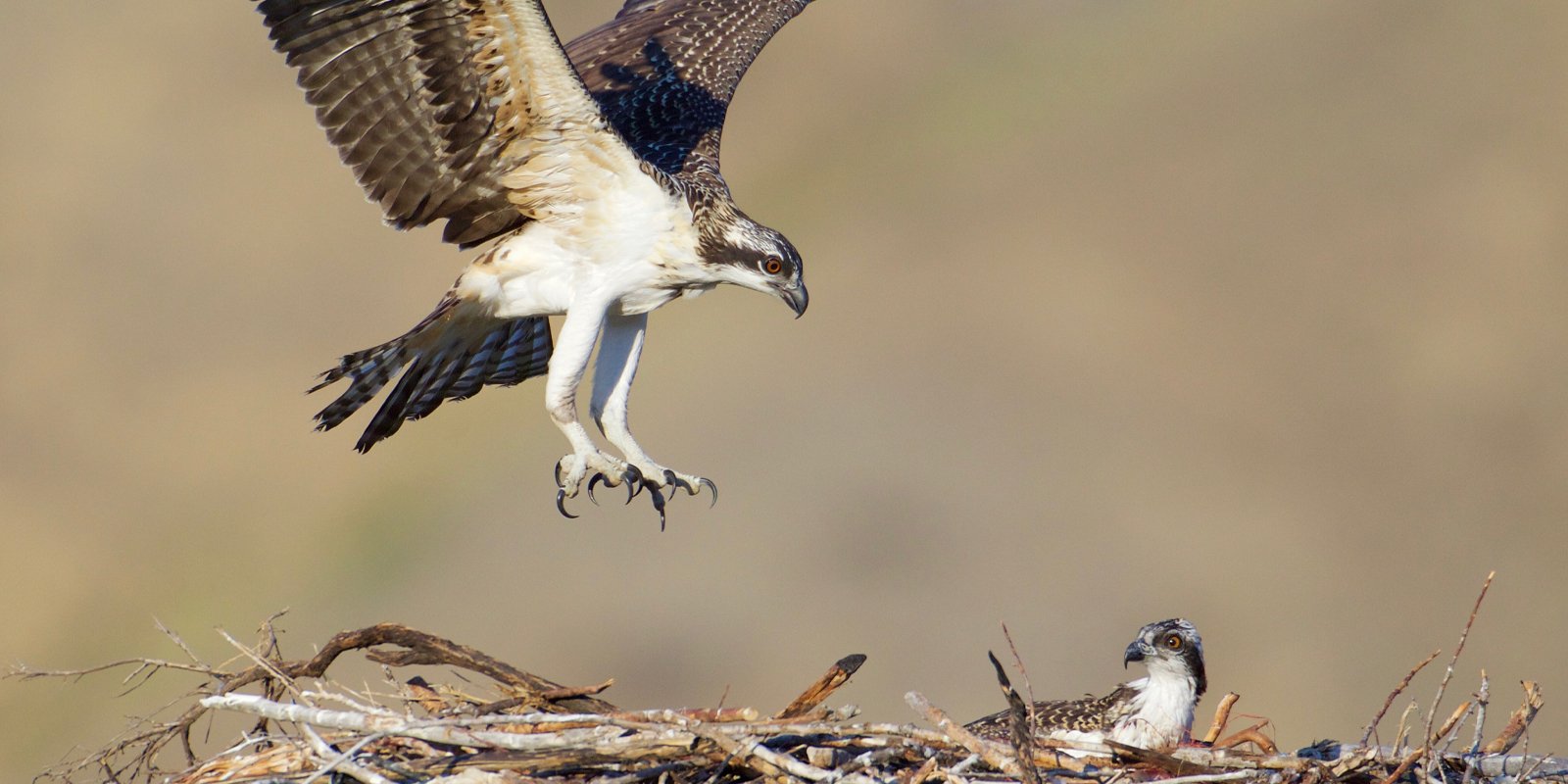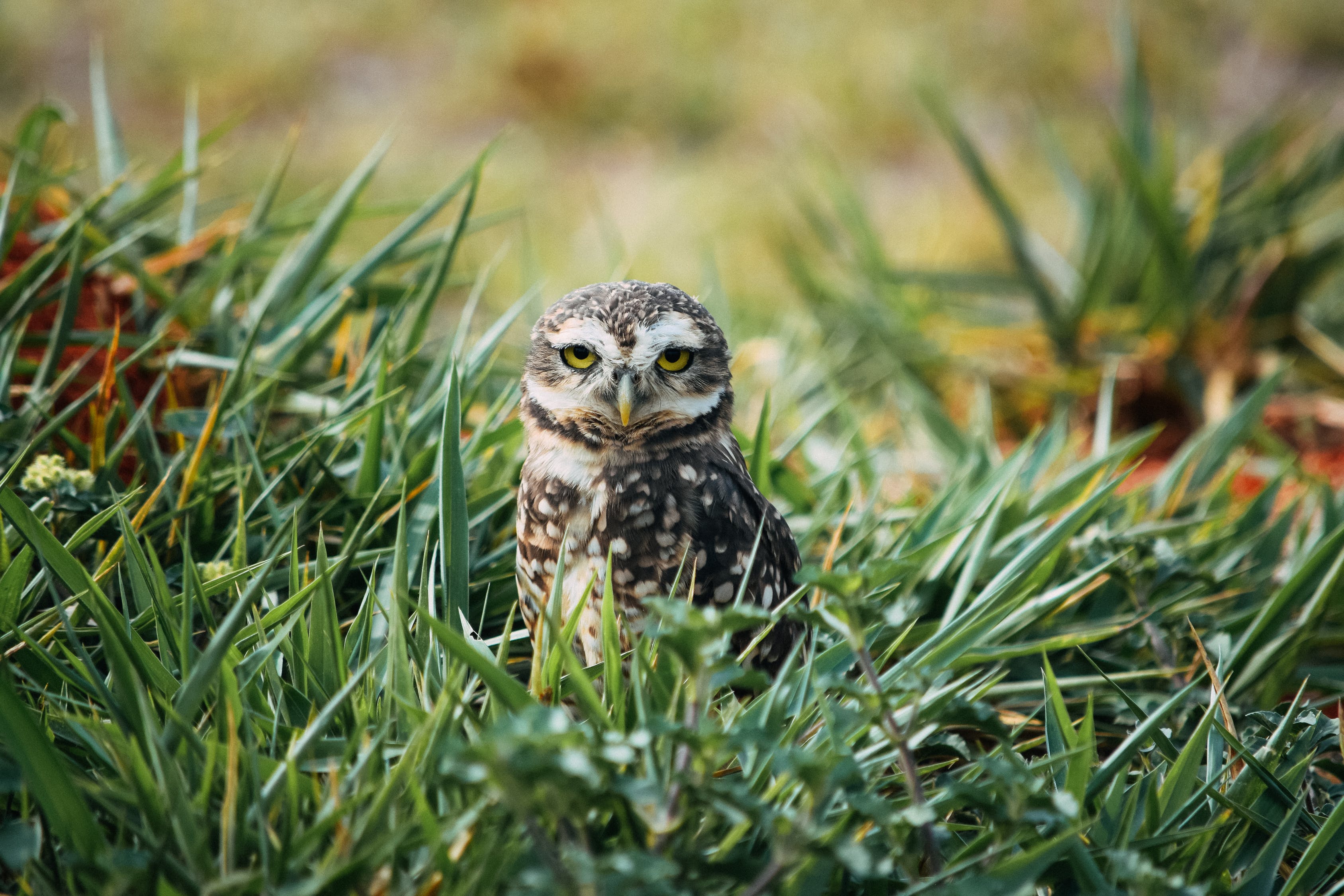Bald and Golden Eagle Protection Act & Migratory Bird Treaty Act
Free Permitting Checklist
Practical Tips to Avoid Environmental Risk on all Your Projects
Download our environmental permitting checklist to get a step-by-step list of ways to protect your project from the 9 most common environmental risks.
Download Your Checklist
Learn How The Bald Eagle & Migratory Treaty Acts Affect Your Project
What is the Bald and Golden Eagle Protection Act?
The Bald and Golden Eagle Protect Act (BGEPA) regulates the taking, possession, and handling of a bald eagle (Haliaeetus leucocephalus) and golden eagle (Aquila chrysaetos) parts, nests, and eggs. While the "possession" and "handling" parts of the act apply mainly to the commercial use of eagles, the "taking" part of the act applies to incidental take.
Under the act, take means to "pursue, shoot, shoot at, poison, wound, kill, capture, trap, collect, destroy, molest, or disturb." Disturb means to "agitate or bother a bald or golden eagle to the degree that causes, or is likely to cause, based on the best scientific information available, (1) injury to an eagle, (2) a decrease in its productivity, by substantially interfering with normal breeding, feeding, or sheltering behavior, or (3) nest abandonment, by substantially interfering with normal breeding, feeding, or sheltering behavior."
There is a historical and ongoing debate on whether the MTBA prohibits incidental take at the federal level.
What is incidental take?
Incidental take of eagles that occurs due to an otherwise lawful activity - like wind farm collisions or abandoned nest sites due to construction noise.
It is essential to know that construction and operational activities that disturb eagles are illegal under the Bald and Golden Eagle Protection Act to practice proper environmental compliance.
Learn more about the BGEPA here
What is the Migratory Bird Treaty Act?
The Migratory Bird Treaty Act (MBTA) makes it illegal to "pursue, hunt, take, capture, kill, attempt to take, capture or kill, possess, or [use for commercial purposes]" any migratory bird in the U.S. with authorization from the U.S. Fish and Wildlife Service.
Under this act, the definition of a federally protected bird has shifted frequently through presidential administrations. Administrations made these recent changes to form a concrete definition:
-
In December 2017, the Department of the Interior (DOI) under President Trump's administration released a memorandum that reinterprets long-standing precedent to say that the MBTA does not prohibit incidental take. Instead, the MBTA prohibits only actions that purposefully pursue, hunt, capture, kill, or attempt to kill migratory birds, their nests, or their eggs.
-
Then, on August 11, 2020, a U.S. district judge vacated the 2017 DOI ruling believing it went against decades of precedent and had questionable expertise backing. The judge stated that the ruling was not administratively sound. As such, incidental take of migratory birds and their nests is prohibited.
-
Then, on November 27, 2020, USFWS published an Environmental Impact Statement (EIS) which proposed to develop a regulation that excludes incidental take from the scope of the MBTA, thus making incidental take not prohibited. The final rule, published January 7, 2021, confirmed the administration’s interpretation that the MBTA only prohibits purposeful take.
-
Then, with the new administration in the White House, USFWS delayed the effective date of the January final rule to March 8, 2021. Then, on March 8, 2021, the Department of Interior officially withdrew the 2017 opinion.
-
Despite the current administration’s apparent intent to reinstate the long-standing interpretation of the MBTA, the courts have made that possibility a bit murky. While several district courts have held that the MBTA prohibits incidental take, others have found that it only prohibits purposeful take.
-
At this time, when determining how to minimize risk under the MBTA, industries should consider their geographic jurisdiction, best management practices, and the leverage they have in the event of an enforcement action.
Learn more about the MBTA here
List of Federally Protected Birds: How to Identify Bald Eagles and Migratory Birds Near Your Project Site
Whether you're laying new infrastructure, laying out new commercial real estate, or building a new cell tower, identifying endangered and protected species is critical in site selection.
Here are some ways you can identify bald eagles and migratory birds near you or your project:
Environmental Consultants
Environmental consultants are individuals trained to look for evidence of environmental risk on project sites and are experts in the environmental permitting process. People hire these experts to provide them with all the information regarding their project site to avoid environmental delays due to protected features. This process typically takes weeks to a month to receive a report regarding a project site's protected species and features. This process occurs during environmental due diligence for a project.
Federally Protected Bird Mapping Software
Cornell's eBird Tool:
This tool allows developers to explore millions of bird observations made by scientists, researchers, and amateur naturalists across the U.S. and the world. The eBird tool uses survey data from scientists and bird waters to track the location of various species of birds, the species distribution, and population density across different regions. This data is recorded in real-time as it is submitted, allowing for the identification of birds that may be on your project site. Though this tool provides extensive information, it lacks site-specific accuracy and a list of federally protected birds for a specific project and the required permits. This tool is not intended to be a lead source of species assessment for development purposes but in support of more extensive tools.
Use Transect's Species of Concern Assessment
Explore bald & golden eagles and migratory birds near your project site. Transect Reports generate an in-depth list of migratory birds and a list of federally protected birds near you or your project with just a few clicks. This software shows you all of the crucial environmental features on your project site, such as protected water or another protected natural resource, and the necessary permits for these risks. With the Transect Vision tool, you can map all of the federally protected birds and other environmental red flags on your site. Transect's database has the most up-to-date information and profiles for protected species. The tool compiles data from multiple federal organizations and in-house environmental consulting experience. Learn more about Transect's mapping tools.

Free Permitting Checklist
Practical Tips to Avoid Environmental Risk on all Your Projects
Download our environmental permitting checklist to get a step-by-step list of ways to protect your project from the 9 most common environmental risks.
What Should I Do if I Have Eagles or Migratory Birds on my Project Site?
Early Management Practices
To avoid disturbance to bald eagles near a project, follow the United States Fish and Wildlife Service's Bald Eagle Management Guidelines, which establish setbacks from nests based on landscape and project type.
The United States Fish and Wildlife Service does have a permit process for taking eagle parts, nests, or eggs. However, it is a time-consuming and tedious process, so we recommend that projects avoid permitting by using the best management practices described in the bald eagle management guidelines (above) and the migratory bird best management practices (below).
Learn more about eagle management practices here
Migratory Bird Management Practices
There is no permit process available for projects that will impact migratory birds or nests. Historically under the MBTA, adverse impacts to birds and nests could result in a misdemeanor violation with a maximum penalty of six months in prison and a $15,000 fine. With the current regulatory uncertainty around the legal interpretation of the MBTA, the risk of an enforcement action varies by state. The best option to avoid any potential fines or enforcement action is survey, avoidance, and monitoring. Implementation of USFWS's migratory bird best management practices will minimize the chance of project impacts on birds and their nests:
-
Communication towers
-
Electric utility lines
-
Oil & gas
-
Wind energy
Learn more bout the eagle and migratory bird protections and fines here >>
Why is it Important to Consider Bald Eagles and Migratory Birds during Site Selection and Construction?
Environmental due diligence is an enormously important factor in site selection and construction. The earlier the risk is known, the easier it is to mitigate and move on from the particular site. The fines and repercussions of adversely impacting bald and golden eagles or migratory birds as a result of project development are as follows:
-
Under the Bald and Golden Eagle Protection Act, the first criminal offense is a misdemeanor with a maximum penalty of one year in prison and a $100,000 fine for an individual ($200,000 for an organization). The second offense is considered a felony. This felony results in a maximum penalty of 2 years in prison and a $250,000 fine ($500,000 for an organization). This act also includes maximum civil penalties of $5,000 for each violation.
-
Under the Migratory Bird Treaty Act, purposeful or incidental take of a protected bird is a misdemeanor violation with a maximum penalty of six months in prison and a $15,000 fine.
Learn more about the eagle and migratory bird protections and fines here >>
Free Permitting Checklist
Practical Tips to Avoid Environmental Risk on all Your Projects
Download our environmental permitting checklist to get a step-by-step list of ways to protect your project from the 9 most common environmental risks.
